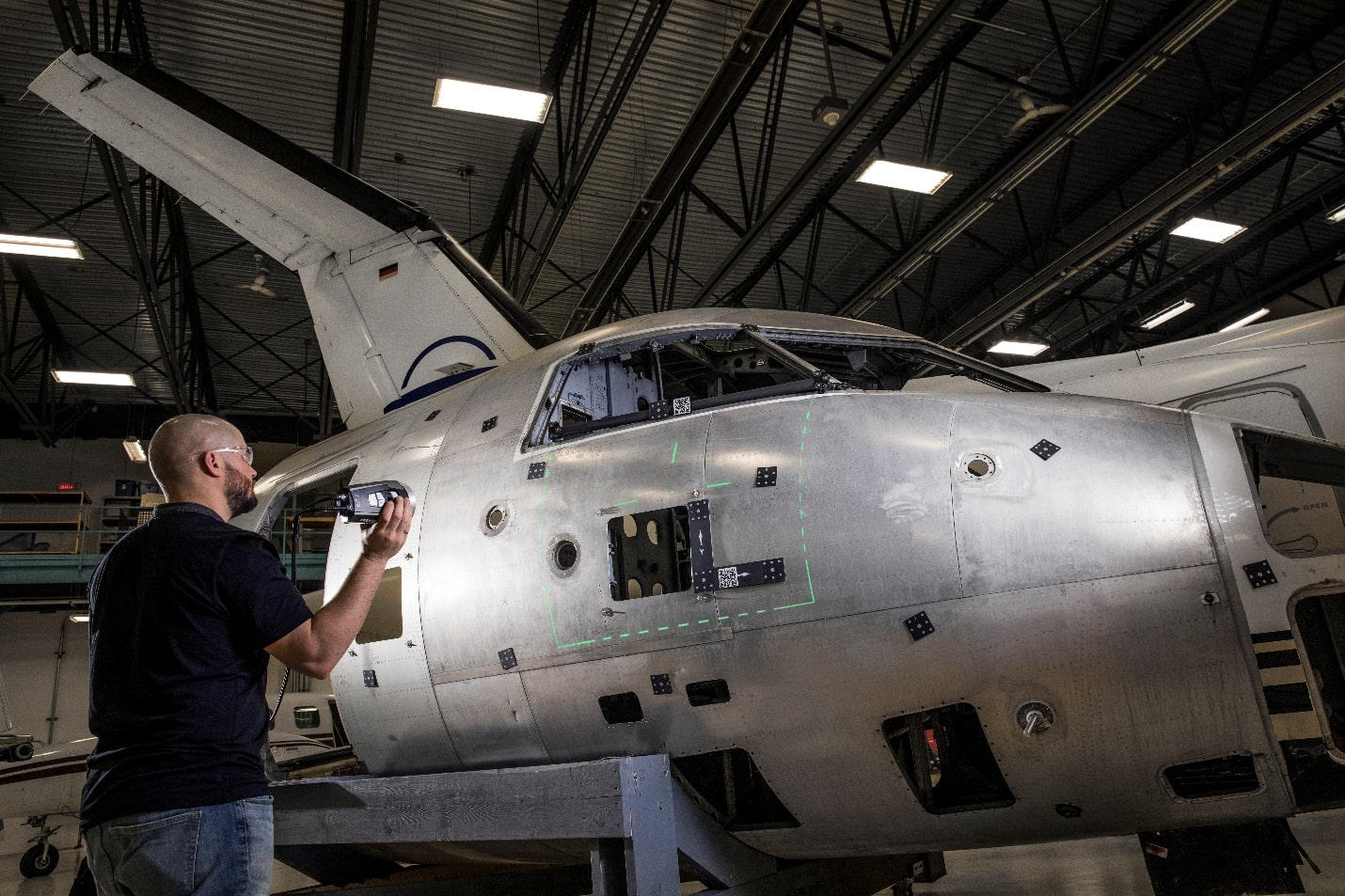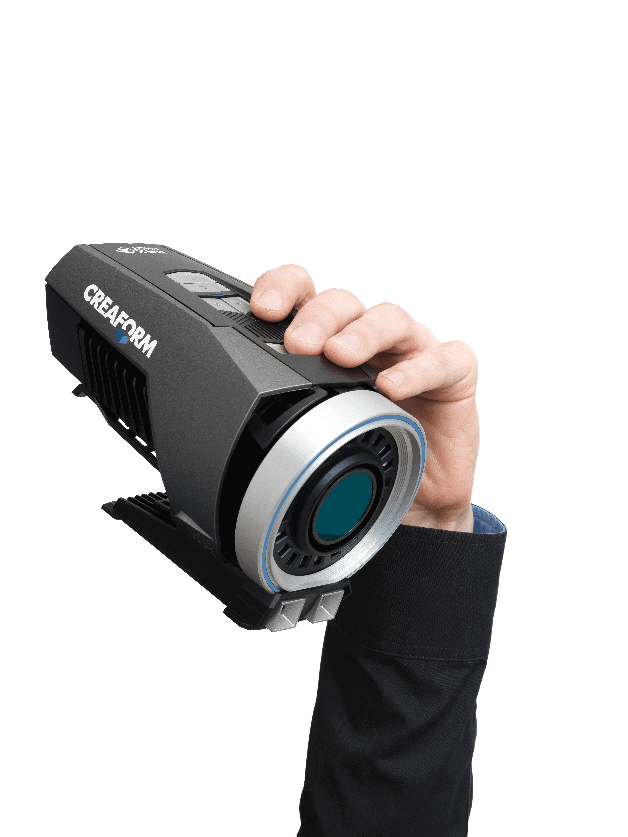What is Photogrammetry?

What is Photogrammetry?
No, it’s not a new type of selfie, photogrammetry is a 3-D coordinate measuring technique that uses 2-D photographs and a known scale length as the fundamental tools for metrology applications. Simply put, the distance between 2 points on an object can be determined by measuring them in a picture and applying a scaling factor.
In practice, a user would place reflective targets across the surface of their critical features and use these locators to create measurements in a metrology software. For example, to identify a plane, you would need a minimum of 3 points. You would place 3 targets on a surface and snap a few pictures of them. Repeating this process for 2 different planes, you could then measure the distance between the 2 planes. For a cylindrical feature, you would use 7 target locators, for a conical feature you would use 5. This is a typical workflow for utilizing photogrammetry for inspection.
When to Use Photogrammetry
The concept of photogrammetry has been around since the birth of the camera but the term “photogrammetry” as we know it was coined around the 1970s when civil engineers decided to use this concept for geographical surveying. Once the technology proved to be a beneficial inspection tool, industries started using photogrammetry for part verification. Even though the technology can be utilized with your off the line bread box parts, the real benefits have been seen with large-scale products, 6 ft. and larger.
Large-scale parts with simple but time-consuming measurements are an ideal use for a photogrammetric tool. Photogrammetry inspection has been implemented in many main-stream industries such as Aerospace, Automotive, Manufacturing and Energy and can be as diverse as inspecting sub-assemblies to body in white inspections to final products.
When not to Use Photogrammetry
Photogrammetry, as useful as it is, does have its shortcomings when it comes to inspecting certain parts. The first goes without saying, any internal features that are not in the line of sight are not a good application for Photogrammetry. Additionally, any product with complex geometry and curvilinear forms become an exponential time-consuming inspection. Finally, I would recommend avoiding parts smaller than six feet, even though you can inspect most with photogrammetry the issue lies with applying targets to identifying small features.
Photogrammetry Hardware
In this new digital age, there exist many types of photogrammetry tools on the market. Most are based off DSLR or digital single lens reflex cameras and then the software is designed around it. The problem with this technology is the complexity that revolves around the camera; focusing, exposure, reflection, a complex operation menu, and all the different accessories you need to operate it.
Just recently, Photogrammetry technology has hit a new era of re-invention. CREAFORM has designed a photogrammetry tool that was designed specifically for Photogrammetry. How about that, a tool designed for its intended purpose. CREAFORM calls it a MAXSHOT 3D and it’s a game changer. It has a sophisticated user guidance system that basically tells you where to point and shoot and whether the shot is good or bad before you even snap a photo. Moreover, the software gives the user an almost video game feel with on-screen graphics and easy interaction.

As the need for the most cutting-edge technology is sought after by many industries in order to give them a leg up, Photogrammetry technology will continue to grow. Ultimately, Photogrammetry has found its place in the market and the real question is how will photogrammetry be utilized in your company.
The engineer’s first problem in any design situation is to discover what the problem really is.
Bob Renella
Product Manager
Computer Aided Technology, LLC

 Blog
Blog